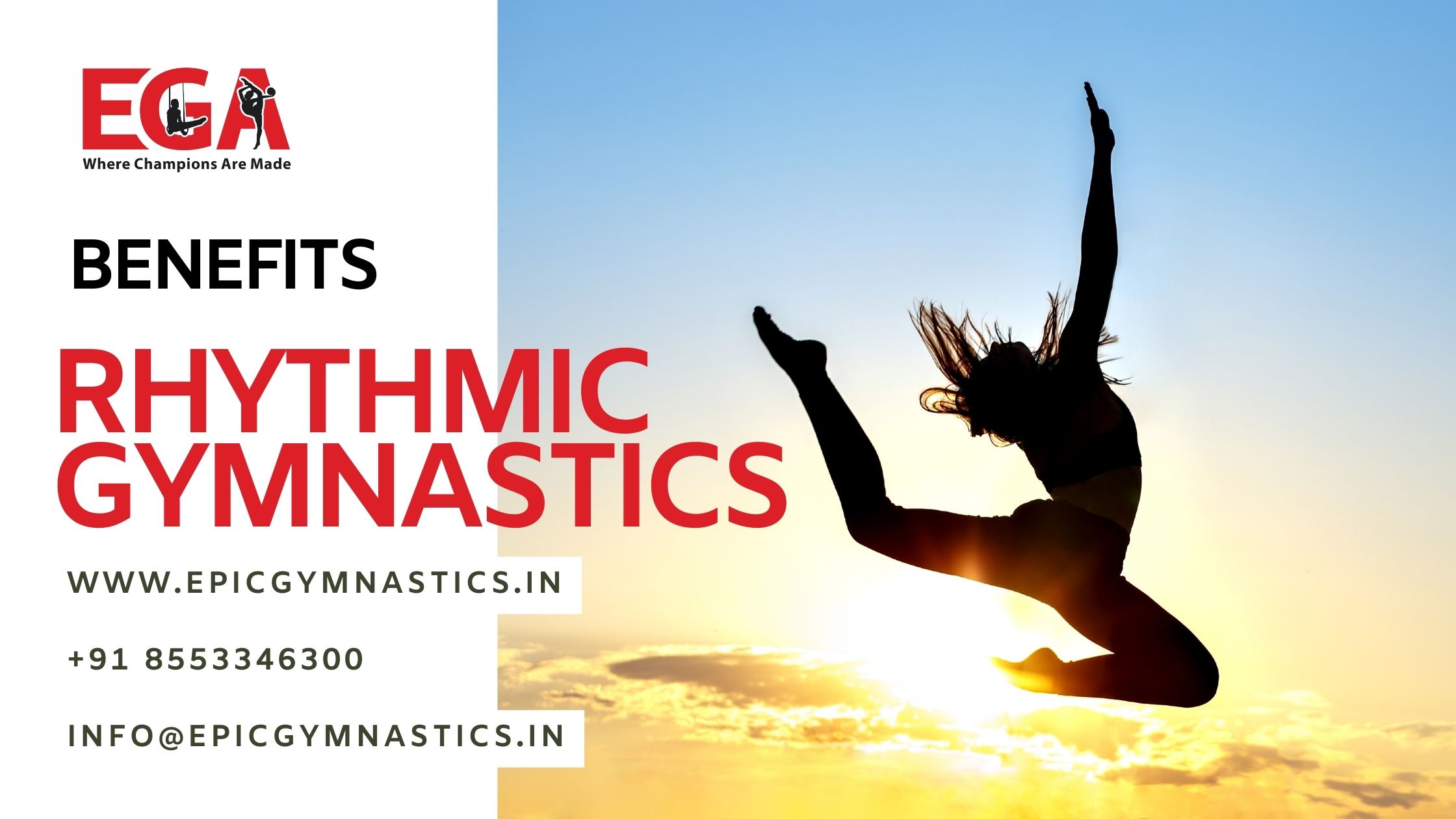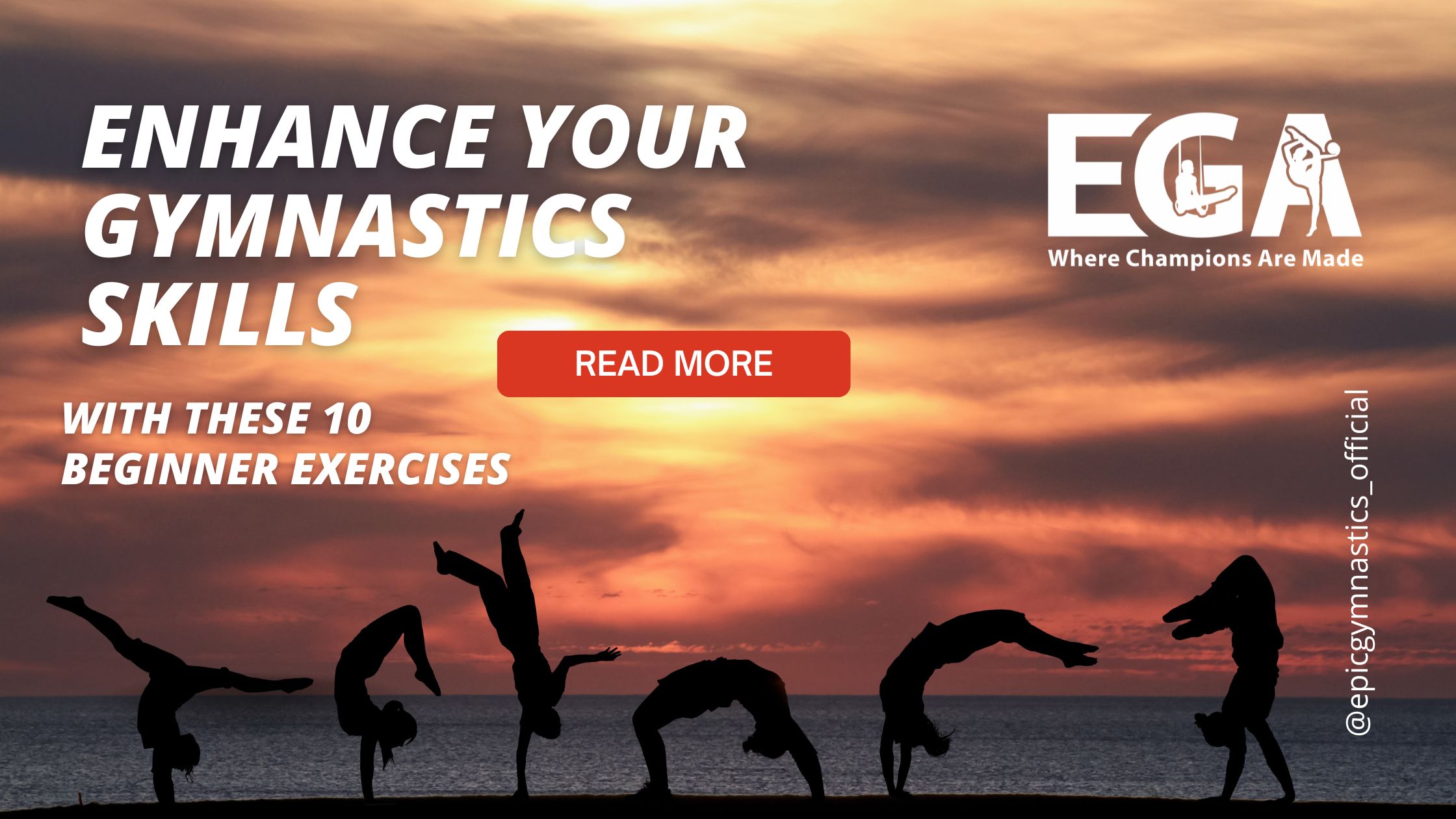Rhythmic gymnastics is a captivating blend of art and sport, combining elements of ballet, dance, and gymnastics. Women exclusively perform it, utilizing various apparatus such as hoops, balls, clubs, ribbons, and ropes. Unlike traditional artistic gymnastics, which emphasises strength and acrobatics, rhythmic gymnastics focuses on grace, coordination, and flexibility. This article explores the origins, benefits, and unique aspects of rhythmic gymnastics, highlighting how it can be a beneficial activity for children, especially at Epic Gymnastics Academy in Bangalore.
Rhythmic gymnastics’ origin and evolution
Early Beginnings
Rhythmic gymnastics has its roots in the early 20th century, evolving from the ideas of several European physical educators and choreographers who believed in the benefits of combining dance and physical exercise. François Delsarte, a French musician and teacher who emphasised expressive movement, Émile Jaques-Dalcroze, a Swiss composer and educator known for his work in eurhythmics, and Rudolf Bode, a German dancer who focused on the aesthetic and expressive aspects of movement, laid the foundation for the sport.
Formalisation and Olympic inclusion
The Soviet Union introduced the sport in the 1940s, which marked the beginning of its modern form. It quickly gained popularity and spread to other countries. The International Gymnastics Federation (FIG) officially recognised rhythmic gymnastics as a discipline in 1962. Budapest, Hungary hosted the first World Championships in 1963. Rhythmic gymnastics made its Olympic debut at the 1984 Summer Olympics in Los Angeles, initially as an individual competition, but group events were added in 1996.
Rhythmic gymnastics benefits
Physical Benefits
- Flexibility and Coordination: Rhythmic gymnastics significantly enhances agility and coordination. The routines require gymnasts to perform complex movements that stretch and strengthen various muscle groups.
- Strength and endurance: Although it focuses on grace and flexibility, rhythmic gymnastics also builds strength and endurance. Holding and manipulating apparatus while executing gymnastic moves demands considerable muscular effort.
- Balance and Posture: The sport promotes excellent balance and posture. Exercises performed on a narrow beam, as well as the requirement to maintain proper body alignment, contribute to better postural habits.
- Cardiovascular Fitness: Rhythmic gymnastics routines are physically demanding and provide a beneficial cardiovascular workout, improving overall heart health and stamina.
Cognitive and emotional benefits
- Concentration and Focus: Learning and memorising routines enhance concentration and focus. Gymnasts must remember intricate sequences of movements and execute them with precision.
- Discipline and Perseverance: The training required for rhythmic gymnastics instills discipline and perseverance. Gymnasts learn the value of hard work and practice in achieving their goals.
- Creativity and Expression: Rhythmic gymnastics allows for creative expression. The integration of dance and music enables gymnasts to explore and convey emotions through their routines.
- Stress Relief and Emotional Well-Being: Physical activity is known to reduce stress and anxiety. The joy of movement and the accomplishment of mastering new skills contribute to overall emotional well-being.
Differences between Rhythmic and Traditional Gymnastics
Focus and Apparatus
Rhythmic gymnastics differs from traditional artistic gymnastics primarily in its focus and use of apparatus. While artistic gymnastics emphasises acrobatics, strength, and power, rhythmic gymnastics centres on grace, coordination, and flexibility. The apparatus used in rhythmic gymnastics—hoops, balls, clubs, ribbons, and ropes—adds an element of artistry and requires gymnasts to synchronise their movements with music.
Judging and scoring
The scoring systems also differ. In rhythmic gymnastics, judges evaluate routines based on their artistic expression, choreography, and the execution of technical elements using the apparatus. Artistic gymnastics, on the other hand, places more emphasis on the difficulty and precision of acrobatic skills.
Training and technique
The training techniques also differ. Rhythmic gymnastics training involves a significant amount of stretching and conditioning to improve flexibility, as well as dance and ballet techniques to enhance grace and fluidity. Artistic gymnastics training focuses more on strength-building exercises, tumbling, and apparatus skills.
How Rhythmic Gymnastics Benefits Children
Physical Development
Introducing children to rhythmic gymnastics at an early age promotes healthy physical development. The sport helps to build a strong foundation of flexibility, coordination, and balance, which can be beneficial for other physical activities and sports. The cardiovascular benefits of regular training contribute to overall health and fitness.
Cognitive Growth
Rhythmic gymnastics also fosters cognitive growth. The need to learn and remember complex routines enhances memory and cognitive function. Children develop better focus and concentration, skills that are transferable to academic and other pursuits.
Social skills and teamwork
Participating in group routines teaches children the importance of teamwork and cooperation. They learn to work together to achieve common goals and develop social skills.
Emotional Resilience
The challenges and successes experienced in rhythmic gymnastics build emotional resilience. Children learn to cope with setbacks and develop a growth mindset, understanding that persistence and hard work lead to improvement and success.
Why choose Epic Gymnastics Academy, Bangalore?
We at Epic Gymnastics Academy, Bangalore, dedicate ourselves to nurturing young gymnasts through top-notch training in rhythmic gymnastics. Our experienced coaches emphasise both physical and emotional development, ensuring that each child reaches their full potential in a supportive and encouraging environment.
State-of-the-Art Facilities
Our academy boasts state-of-the-art facilities, featuring spacious training areas and high-quality apparatus. We ensure that our gymnasts have access to the best equipment and resources to support their training.
Expert Coaching
Our team of expert coaches brings years of experience and a passion for rhythmic gymnastics. They are committed to providing personalised training programmes that cater to the individual needs of each gymnast, focusing on skill development, artistic expression, and overall fitness.
Holistic Approach
We believe in a holistic approach to gymnastics training. Alongside physical conditioning, we incorporate elements of dance, ballet, and music to enhance the overall development of our gymnasts. This approach not only improves their athletic abilities but also fosters creativity and emotional expression.
Community and support
At Epic Gymnastics Academy in Bangalore, we pride ourselves on creating a strong sense of community and support. We foster a welcoming and inclusive environment where we encourage everyone to achieve their best, including our gymnasts and their families.
Conclusion
Rhythmic gymnastics is a unique and enriching sport that offers numerous benefits for children. From physical development and cognitive growth to emotional resilience and social skills, the advantages of engaging in rhythmic gymnastics are manifold. At Epic Gymnastics Academy, Bangalore, we are committed to providing the best training and support for young gymnasts, helping them to achieve their full potential and enjoy the beauty of this graceful sport.
By choosing rhythmic gymnastics, children can embark on a journey of physical fitness, artistic expression, and personal growth. We invite you to join us at Epic Gymnastics Academy, Bangalore, and experience the transformative power of rhythmic gymnastics.








